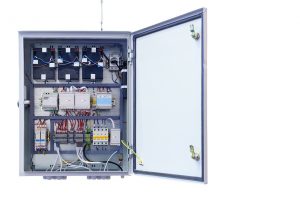 Electrical thermal management has long been both a challenge and an avenue for innovation when it comes to technology and industrial applications. The more powerful technology and machinery becomes, the more important it is to control the waste heat that it emits. Also, the more of an impact that malfunctioning technology will have on any given company’s operational costs and productivity. Given the many considerations that come with cooling electrical enclosures, heat exchangers are among the most efficient ways for companies to address them all without spending exorbitant amounts of capital just on thermal management.
Electrical thermal management has long been both a challenge and an avenue for innovation when it comes to technology and industrial applications. The more powerful technology and machinery becomes, the more important it is to control the waste heat that it emits. Also, the more of an impact that malfunctioning technology will have on any given company’s operational costs and productivity. Given the many considerations that come with cooling electrical enclosures, heat exchangers are among the most efficient ways for companies to address them all without spending exorbitant amounts of capital just on thermal management.
The Efficiency of Thermal Management Methods
Efficiency is the goal for most new forms of technology, but before heat exchangers, it wasn’t a concept that often referred to thermal management. Then, the most frequently relied upon solutions were based on air conditioning technology, which involves chilling air using Freon and complex machinery, then utilizing that chilled air to stop electrical equipment from overheating. Now, heat exchangers provide a much more efficient method that involves transferring heat rather than freezing it out.
The Amount of Heat that Needs Management
Newer technologies also produce higher amounts of energy, and therefore, higher amounts of waste heat. Therefore, any electrical cooling method must also be able to handle varying demands for innovative applications. The benefit of heat exchanger technology is that methods like natural/forced convection and phase-change cooling can handle even high-performance levels of waste heat without any drop in their functionality or reliability.
The Level of Ingress Protection
While cooling electrical enclosures, it’s just as important to maintain a high level of ingress protection as it is to maintain a steady level of effective thermal management. Simple, common contaminants, such as dust or other particles in the air, can hinder electrical and heat exchanger equipment. To combat this, heat exchangers are often designed to operate within a closed loop and sealed using high-quality, neoprene gaskets and seals.
To learn more about what you should consider when cooling electrical enclosures, call Noren Thermal Solutions in Taylor, TX, at 866-936-6736.







